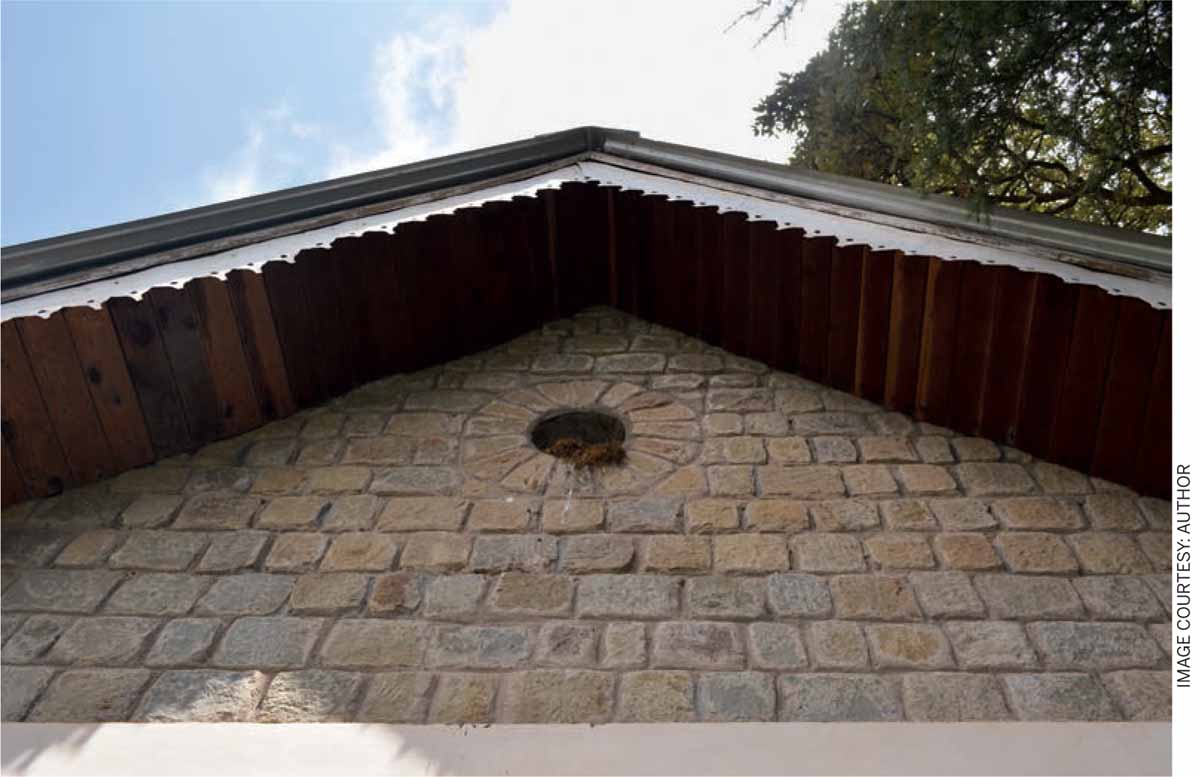The Case of an Urban Human
Today, human beings are swinging on a giant pendulum of anthropological mechanisms. Change-makers are increasingly recognising the irreversible effects of human hegemony on their micro and macro environmental context with a cherry of hope to reconstitute the otherwise disrupted ecosystem. A century of modernism, which brought its own series of confined systems in the development field is being reproached lately as having narrowed down onto a single living species: human beings. The inadvertent focus of one species on the only similar species to achieve experimental results enforced by the acts of science and fostered technology has developed increased skills and abilities amongst us to suck the planet’s resources in a single life-time, wiping out entire ecosystems in a snap. This has broken the intricate structure of interdependence in which multiple species are woven by their own accord.
The pressure induced by humans and that experienced by other species is already showing results through the subsets of planetary warming. But we are not the only living system on earth. There is a socio-ecological system, which does not solely operate through us. This system comprises multiple species that are interconnected with one another, with us, in a complex network of micro as well as macro systems. We are a part of the whole, a nut in a grand fixture, a guild in the assemblages of multiple organisms. The human-led socio-ecological system has a major lacuna in its inter-relationships across an urban matrix, leaving the relative ratios of species imbalanced and incommensurate. Therefore, a subtle bridge between humans and nature needs to be, and can be, explored. For example, as discussed in this essay, pollinator-friendly designs through landscape design interventions can be highly effective in integrating across diverse scales.

Pollinator People Design
This design idea talks about the primary common fauna that humans tend to observe immediately outside their walls and that is now becoming infrequent: the birds, bees, butterflies and other insects. Such a landscape intervention in an urban area is capable of withholding certain habitat conditions for plant pollinators and proposes congenial surroundings that are no longer spatially disjunct.
Pollinators are important for the sustenance of biodiversity. Various reports summarise the fact that pollinators are responsible for 70% of the world’s major crop varieties and 90% of the flowering species, wild or hybrid. Hence, pollinators are equally important for humans. The interaction of plant-pollinators is extremely unique and is responsible for a successful harvest. However, pollinators in the wild are as important since they are caught in an intricate pattern of light and night. Therefore, along with the bees, birds, butterflies, beetles and other insects, there comes a whole batch of bats, rodents, lizards and squirrels, which have been found to pollinate in the wilder realms of the system. However, in an urban locale, we may prefer to consider the former batch in our efforts to call or reclaim biodiversity.
Plant pollinators have been recorded to evolve with a growing urban matrix, which gives us a ray of hope. A bird’s nest on a roof instead of a tree fork or a bee hive in a wall alcove instead of a tree cavity seem to be subtle nuances of evolution that these species showcase and are important signals of alliance that need to be considered for a harmonious living system. This also indicates that despite suffering from habitat fragmentation and eventual loss, pollinators have re-routed their extents and have adapted to certain living conditions. Such adaptations have also led to a decrease in biodiversity owing to a decline in plant-pollinator ratios in an urban matrix. If the plant diversity is more, apt and native, the pollinators are able to lend advanced services to the ecosystem whereas a decrease in the same leads to a downfall in the skills of pollinators. Similarly, a decline in the tactical skills of pollinators leads to a blunt plant diversity. The indirect consequence is the depletion of a variety of pollinator species as well as plant species from our ecosystem, while a direct consequence is reduced blooming, reduced harvests and maybe one slice of bread less on our plate. However, a piece of bread is too little for people to whole-heartedly embrace pollinators.
But the relationship can be established through subtle notions of design that can subconsciously merge people into the system, calling for a passive interaction along with activating awareness. Therefore, apart from meeting a quantum of plant-pollinator ratios, we may translate the numeric into an abstraction of plant-pollinator-perception.
Fundamental aspects of Pollinator People Design
Pollinator-people design involves recording of existing or disappeared pollinator species, their nesting and foraging habits. It is important to know who are the pollinators and what are their life preferences. The reference ecosystem acts as a model to investigate the same. Reference ecosystems lay in the form of ancient scriptures, old texts, narratives from the older people who have been residing in a similar place for long, or any place which displays similar habitat characteristics. They reveal what the place in an ideal situation might have been and give us hints at what could exist in the best possible way with the advent of humans. In this manner, we can arrive at different habitat conditions for pollinators spread across an urban matrix and beyond.
Further, it is imperative to understand which flora attracts pollinators and how a combination of various flora can lead to the creation of a habitat. Colours, odours, different vegetation stories and their spatial character are fundamental parameters for pollinator-people design. Pollinators are elemental in eliciting various scopes of passive interaction and experience for people through vision (yellow-brown bees, green-grey birds, dramatic colours of beetles and butterflies, etc.), sound (humming of bees, chirping of birds, crinkling of insects), or a sense of acknowledgement (bees, bats).
Pollinators and People
Bees are one of the most common pollinators known to human beings. People also fear them for their sting. However, pollinator-people design can be elemental and an eye-opener to these myths. Bees are not interested in people but nectar, pollen and flowers. Bees like to live in habitats such as forests, woods, orchards, gardens that host flowering species. Honey bees prefer building their hives in the hidden cavities of a tree or under the edges of woods where they cannot be seen by a predator whereas bumble bees nest on the ground. Likewise, various species of bees have their own nesting preferences. A prior study of the area can always reveal which species exist in a micro-region. Further, bees are not very susceptible to the physical presence of people. Bees can be observed sucking nectar from a safe distance. Bees don’t care. But they do care when people begin to trample on their habitats and disturb them during their daily cycles. The fragmentation and loss of habitat has led to the wiping out of a plethora of bee species as reported by scientists, giving rise to colony collapse and disorder.
Therefore, pollinator-people design can bring a positive shift in the effects of people on bees, also bringing a perceptional shift.
Bees appear to be active from the first ray of the sun till the last ray, after which they begin to head towards their homes, as low light begins to impede their sight. They are found humming specifically during the spring and summers when they are collecting food, pollen and nectar to store for the winter. Monsoons act as a period of dearth for bees. Yellow, bright white or blue flowering species are found to attract them. Angelonia angustifolia and Berberis aristata are a few species that entice bees.
Winters are a period of hibernation for bees. So, whom does the winter flowering species offer the nectar to? Butterflies and many other unknown creatures. Butterflies are another common pollinator species that people perceive as beautiful. Butterflies are active from dawn to dusk in search of bright colours like red and purple. However, it is not just a flower which is important to sustain a butterfly. The life of a butterfly is divided into stages: egg, caterpillar, pupa and adult. The interesting fact about this metamorphosis is the difference in requirement of the initial stages from the later ones. A butterfly carefully lays its eggs on specific host plants, on and underside the leaves, which the caterpillar can eat. These host plants attract butterflies through their faint smells.

Right: A honey bee foraging pollen and nectar from the flowers of Mangiferra indica
Therefore, pollinator-people design takes care of the plant species required in the life-stages of a butterfly. They flutter the most during sunny periods of the day and a year-round provision of flowering species can ensure their flitting under a faint winter sun as well. Hence, we gather that it is possible to have a butterfly season over an entire year. Stachyterpheta indica is one of the major common nectar-providers for butterflies while Artabotrys hexapetalus and Aristolochia grandiflora are a few of the important larval host plants.
Birds are an important but less known species which pollinate. They are all around us. Or maybe not. In a typical dense urban locale, birds are becoming a rare sight. They need a strong structural framework of flora as a habitat, the loss of which has led to their disappearance and retreat. Hummingbirds, spider-hunters, sunbirds, honeycreepers, leaf-warblers, laughing thrushes and rose finches are just a few that pollinate flowering species. They are attracted to bright colours of scarlet, orange, red or white. Most birds like to nest in hidden bushes, tree forks, or tree holes. They do not prefer being near people and therefore their susceptibility to people is high. However, people do not associate birds with danger. The whistling and singing of the birds are often welcomed by people. So, birds become important stakeholders in the pollinator-people design. Cuphea ignea is one of the major species that attracts hummingbirds as well as butterflies.
Further, there is another pollinator that undergoes hibernation just as bees do. Bats are nocturnal and hence active at night. They mostly look for dull white, green flowers that emit a strong scent. They are not welcomed by people as they are believed to spread pungent smells. But that’s not the case. Bats that are found in caves give rise to a pungent ambience. However, in an open area inhabited by bats, they do not interfere with any human activities on the ground and stay in the trees. This can be elemental in educating people on the importance of bats, breaking pre-conceived notions. Madhuca indica, Syzigium cumini, Spathodea companulata, Datura innoxia and Ficus sp. are some of the species that support bats.
Moths, a close relative of butterflies, fly during the night too. When most birds, bees or butterflies are at rest, moths visit the fragrant night-blooming plants. But they also face severe competition from bats. Bats prey on moths as well. This has led moths to evolve certain skills of surviving during the day and in the dark.
Hence, we gather that the intricate balance of life persists between so many species in different places and times.


Vertical Vegetation Structure
With the infusion of ground covers, understoreys, middle storeys and upper storeys of a multitude of native plant species, we can attain a vertical vegetation structure which is elemental in inviting a diverse set of pollinators. This helps pollinators to find their own niches leading to nesting and foraging probabilities. The structure further helps us in ideating a space that can host people along with pollinators. Hence, visualising thresholds and edge conditions of habitats are crucial in order to induce a sense of acknowledgement and observation amongst people while replenishing pollinators and their lost niches. The structure actively involves different characters of flora such as tall, short, erect, wiry, slender, droopy, spreading, broad-foliage or intricate, deciduous or evergreen, which help in the creation of a space imbibing a sense of flow, movement, inviting, screening or barrier-making. It helps in formulating the thresholds, which are the fine-lines of space demarcation.
A vertical vegetation structure needs to incorporate a variety of native flora, which functions during different seasons and times of day in order to proper continuity in the blooming process that will help the species regain their momentum and reclaim a habitat. This can be applied as a planting scheme of park under design, a road median, pedestrians or any public plaza.
Also, the buffer zones need to be taken into consideration where human interference is minimised so as to create safe nesting pockets for the pollinators. Seasons and nature’s rhythmic patterns help in the development of a pollinator- friendly network. Time acts as a catalyst in creating behavioural cues amongst people due to changing colours of landscape. A sub-conscious acceptance of pollinators can slowly take position and lead to ingestion of the same.
Epilogue – Cities Sustaining the Wild
Cities today are like a dying amoeba. They are suffering from rigid intersections of urbanity that were once capable of stretching themselves to accommodate a plethora of living systems. The morphology of a city when determined by the status of its residing species tells us the rate of fragility of its socio-ecological system. When emphasis is laid on re-establishing the lost habitats and development of ecological corridors in view of urbanisation, it can help us re-read the interconnections at stake. The relation of people and pollinators is one such critical point of recovery.
However, apart from reclaiming the wilderness and retaining it, another dimension of multiple-species urbanism needs to be arrived at which carefully manages the prevention of human-animal conflict in the states where urbanism is a newer phenomenon. Instead of wiping out earlier natural mechanisms and replacing them with newer ones, we can simply attempt to assist the wild through responsive and functional landscapes. Any developing state holds deep responsibility in the manner of utilisation of its resources, devising landscapes and developing a socio-ecological system. Can the dying amoeba be re-activated through the wild? After all, a sustainable urban matrix cannot be envisaged while environing for humans alone.



Comments (0)